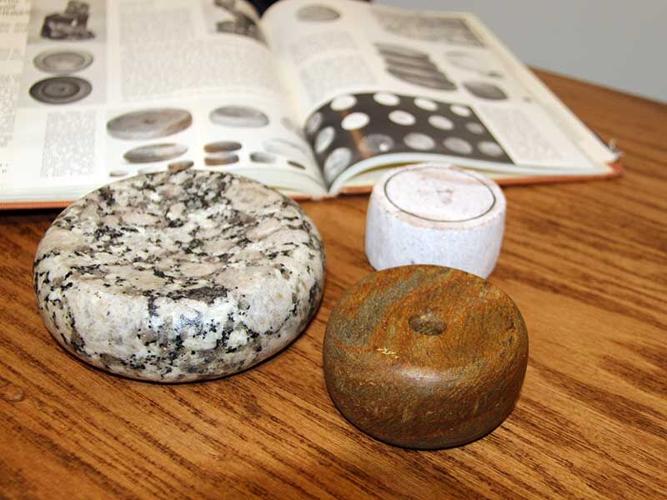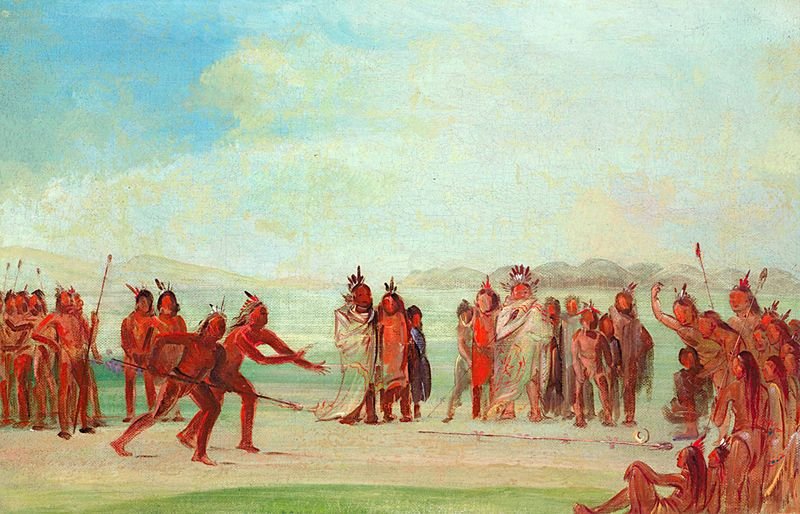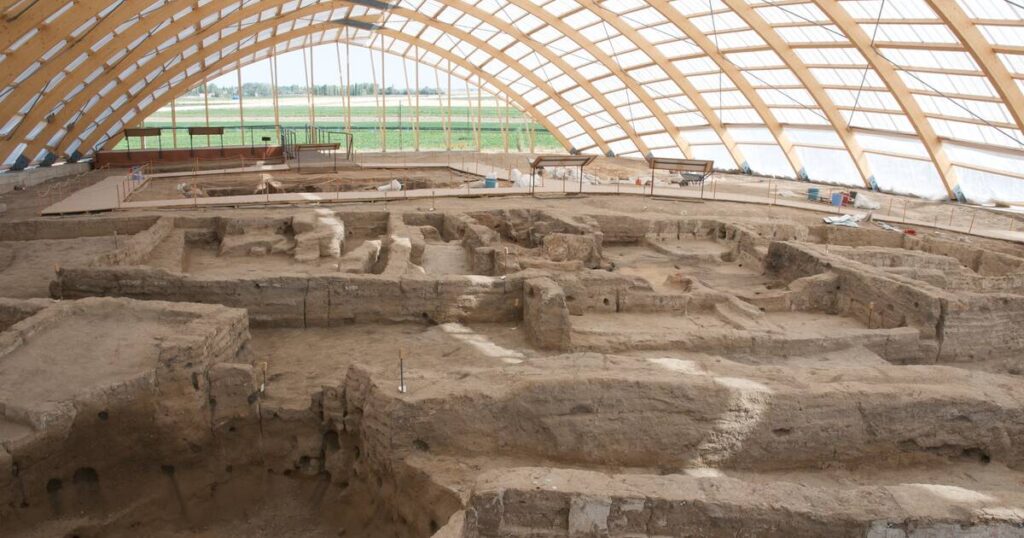Chunkey is a native American game that is played by throwing a spear as close to a rolling stone as possible. One player would roll the stone out and then one or multiple players would throw their respective spears while the stone was still rolling. The closest spear gets the point. This is the basis of the game but it was played in many different varieties depending on where you were from. It is even believed that some tribes from Mexico had a version of the game(Reporter 2020).

Already you can see that this was much more than just a game some Cahokians played. You can see by the spread of the game that there was value in sharing the game and spreading it making it more than just a use of time. Many Cahokian emissaries would carry a Chunkey ball in one hand and a war club in the other. This would signify either a peaceful option or a violent one(Pauketat 2009). Chunkey therefore became a diplomatic tool to offer peaceful solutions to diplomacy. This also reinforces the idea that it was spread so much because these emissaries would have brought it along for the purpose of engaging in peaceful diplomacy.
Although Chunkey did play such a large role in diplomacy for Cahokia it also played a vital role in local day-to-day life. Many players would bet their houses or life savings on the game. Not only was monetary value on the line but also pride. There are accounts of people committing suicide after losing(Reporter 2020). Furthermore, Chunkey was used to settle local disputes. It became a way to settle issues between people without the need for bloodshed. As long as both parties followed the game’s results, Chunkey was used to resolve hunting rights, territorial disputes, or any disagreement between two people(Lepine 2023).

The value and power Chunkey carried in Cahokia and all of North America at the time tells us how it was more than what we think of as a game today. It was a political tool that the Cahokians used to engage in diplomacy with other tribes. Chunkey was also a tool that everyday people used to settle disputes and issues they had. Most people at the time in North America used, or at the very least recognized, Chunky as having the ability to be a decider during disputes. People trusted each other to uphold the results of the game and saw Chunkey not just as a game. It was seen as a symbol of peaceful negotiation on a personable level and on a larger scale.
References:
DeBoer, Warren R. “LIKE A ROLLING STONE: THE CHUNKEY GAME AND POLITICAL ORGANIZATION IN EASTERN NORTH AMERICA.” Southeastern Archaeology 12, no. 2 (1993): 83–92. http://www.jstor.org/stable/40712999.
Lepine, Nicolas. 2023. “Montessori Physical Education Blog Chunkey – Traditional Native American Sport.” Montessori Physical Education. April 23, 2023. https://www.montessoriphysicaleducation.com/new-blog/chunkey-traditional-native-american-sport2023/4/7.
Pauketat, Timothy. 2009. “America’s First Pastime – Archaeology Magazine Archive.” Archive.archaeology.org. September 2009. https://archive.archaeology.org/0909/abstracts/pastime.html.
Reporter, LINDSEY BARK. 2020. “Chunkey: A Game of Stones.” Cherokeephoenix.org. August 27, 2020. https://www.cherokeephoenix.org/culture/chunkey-a-game-of-stones/article_cdca67ea-6e61-5457-9309-500d1c95183f.html.
Additional information
PBS website https://www.pbs.org/native-america/chunkey
Interesting Blog https://livesandlegaciesblog.org/2019/10/17/when-games-are-serious-business-chunkey/


